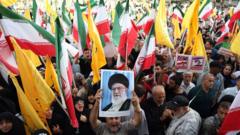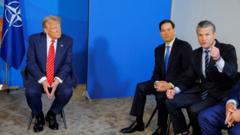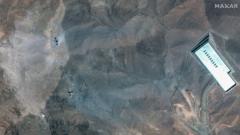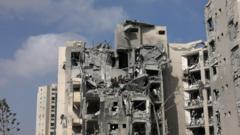A recent leak from the Pentagon's Defense Intelligence Agency reveals that, while US strikes aimed at Iran's nuclear facilities may have caused temporary setbacks, the core components of Iran's program remain largely intact. As intelligence efforts ramp up, the situation continues to evolve.
Unpacking the Leak: Insights into the Impact of US Strikes on Iran's Nuclear Program
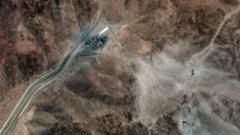
Unpacking the Leak: Insights into the Impact of US Strikes on Iran's Nuclear Program
A leaked US Defense Intelligence report raises questions about the effectiveness of military strikes on Iran's nuclear facilities, suggesting minimal long-term impact.
A leaked assessment from the Pentagon's Defense Intelligence Agency (DIA) has stirred discussions regarding the impact of recent US strikes on Iran's nuclear sites, particularly the heavily monitored Fordo facility. Analysts emphasize that the damage caused by the American attacks may not be as significant as initially perceived, potentially causing only months of delay rather than a long-term halt to Iran's nuclear ambitions.
The DIA is tasked with gathering military intelligence to inform operations and has provided a "low confidence" assessment due to the complexity of determining the aftermath of strikes undertaken at sites designed to be hidden. Initially publicly revealed by Western intelligence in 2009, Fordo remains a focal point in discussions about Iran's nuclear capabilities.
Chairman of the Joint Chiefs of Staff, General Dan Caine, noted that final assessments of the damage would take time to complete. Analyzing the strike's effectiveness is complicated due to the fortified construction of the facility, which likely mitigated the American bombs' intended destructive capabilities on the crucial machinery inside.
The delicate centrifuge machines, essential for uranium enrichment, are particularly sensitive and may have sustained severe damage from the explosions. Expert analyses will require diverse intelligence methods including seismic readings to detect underground damage, radiation sniffers to identify any leaks, and advanced 3D imaging technology to assess the interior of the site.
Despite potential damage to the facilities, intelligence forecasters believe that Iran may have preemptively relocated its enriched uranium and centrifuges to undisclosed locations, which raises the possibility of a rapid reconstitution of the nuclear program elsewhere. Observations of trucks at Fordo prior to the military action hint at ongoing activity to shift materials.
While the recent attacks might have created obstacles for Iran, experts caution that simply delaying their nuclear capabilities does not guarantee the eradication of their programs. Iran's capability to devise defensive and offensive nuclear strategies is a multi-stage process demanding specialized knowledge, further complicated by previous Israeli actions targeting key scientific figures in the program.
Moving forward, the continuously shifting landscape of Iran's nuclear endeavors will intensify the scrutiny and efforts of intelligence agencies keen to monitor and evaluate any signs of resurgent weapons development. The possibility of renewed conflict looms as diplomatic efforts remain strained, and a clearer understanding of the impact of US strikes unfolds in the coming months.







